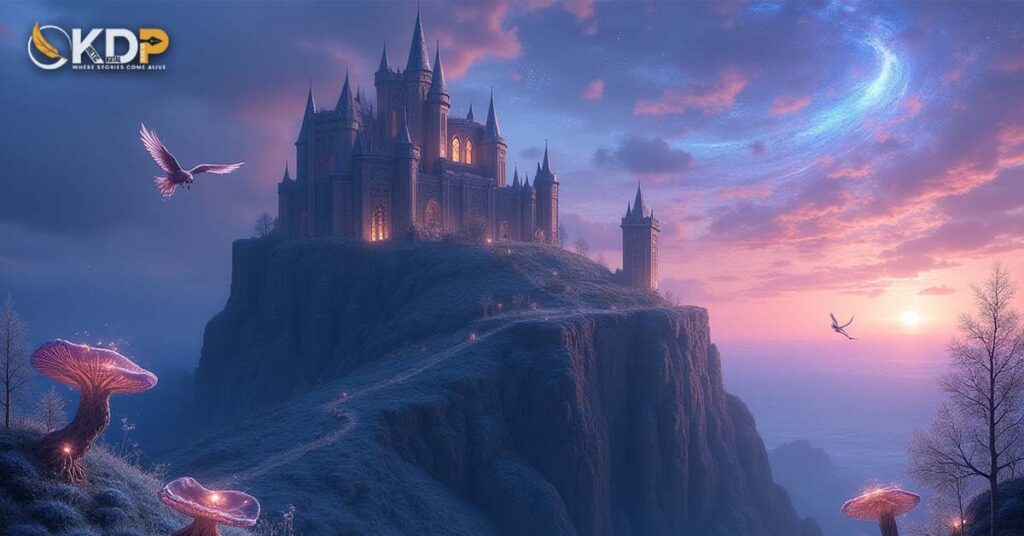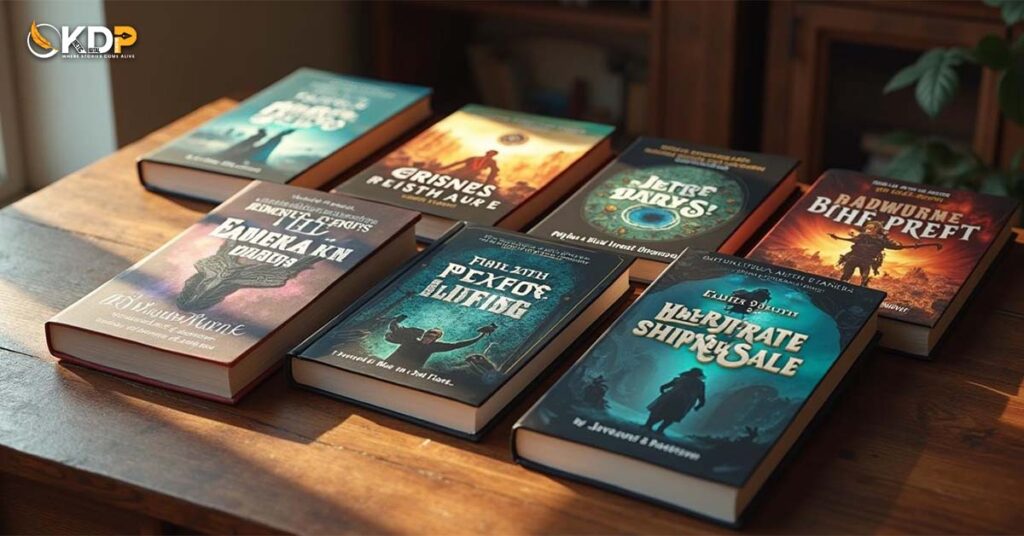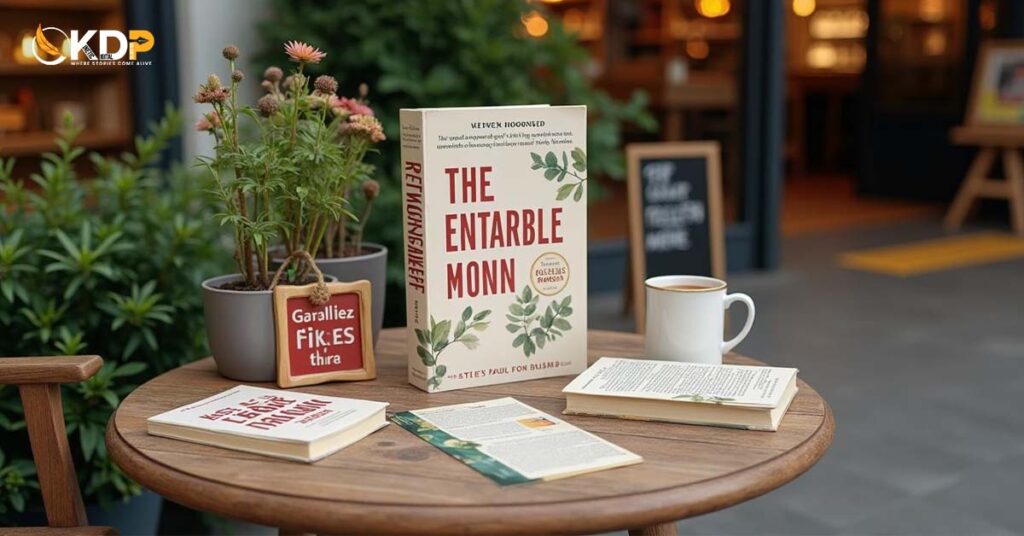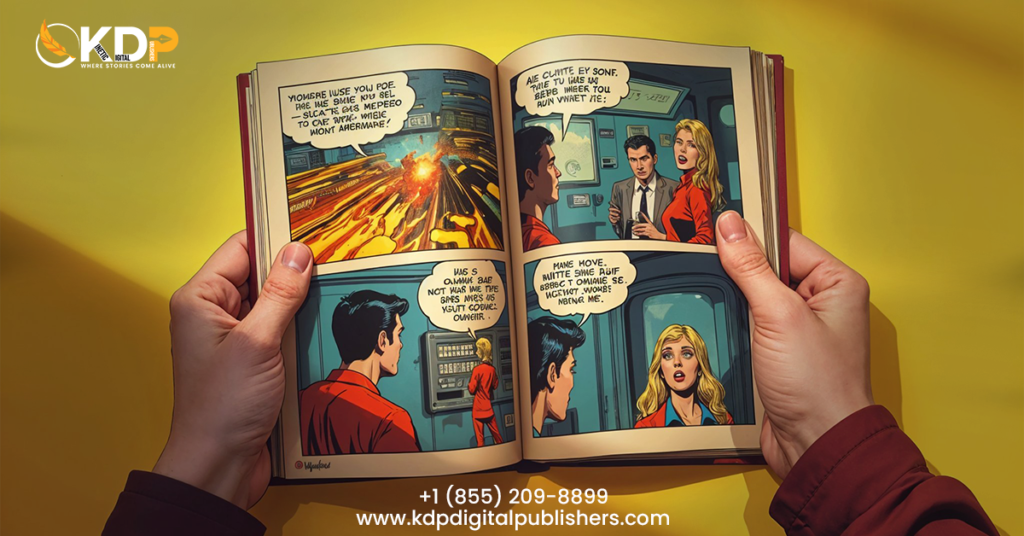How to Write a Fantasy Novel
Most of us are still under the impression that fantasy novels are all about either dragons or blood-thirsty vampires, but that’s not true; the fantasy genre on itself has evolved and become more competitive than ever, especially the Young Adult (YA) genre, constantly pushing boundaries and dragging both the writers and readers through expanding worlds and layered themes. And let’s not even get started on the pressure to nail the aesthetics, inside the pages, and on the shelf.
The fantasy shelf is crowded, so to stand out, you need something special. You need that unique element that makes your story different. That’s what will set your story apart. Don’t think you’ll go far if you just follow the same path as other authors.
Readers have seen the same magic systems, sword fights, and royal drama a hundred times. Think about what they haven’t seen, exactly! Your voice and your perspective. You haven’t made it this far for nothing, so let’s get you started on how to write a fantasy novel without succumbing to those old-tale fantasy norms.
Laying the Groundwork
Every epic doesn’t start with a prologue; it starts before you even open your document. And this is exactly where most new writers crash, but why is that? Many writers think they aren’t smart enough to write fantasy. They believe it’s too complicated for them. So, they miss out on the basics.
Writing a fantasy book isn’t just about creating Elvish names or drawing maps with mountains and floating cities. It’s really about asking the right questions. What sets your world apart?
You can be all about writing straight from the gut, and truthfully, that’s the norm, but passion without direction is just noise. Start with knowing your audience. This means figuring out if you’re writing for adults. New Adult? YA? Middle Grade? Each age group has its own expectations, pacing, tone, and emotional depth.
Some writers swear off reading their genre while drafting. They fear they’ll “absorb” someone else’s flair, and who can blame them? Yet here’s the deal: if your voice sings with clarity and your vision is bright, you will avoid becoming a copycat without realizing it. Dive into the greats of your field, analyze their hits and misses. Just remember, keep your unique voice intact! Stay authentic, and pen your story with heart and purpose.
Building Foundations
Alright, you’ve figured out the kind of story you want to tell, and that’s brilliant! Now comes the part most people either overdo or completely skip: the blueprint. No, I don’t mean getting lost in a 100-page document. You know, the one with family trees, made-up calendars, and seventeen moon phases. This is before you even write Chapter One. But you do need structure. And that starts within your world.
For your magic system to look cool, you need more than just flashy powers. Ask yourself: if this magic really existed, how would it shape the world around it? How would it change people? Shift cultures? Influence politics? Because truth be told, if there are no limitations or rules, then the stakes go right out the window. Give your magic some structure. What can it not do? Who gets to use it, and who punishes those who even try? This is how your story will bite.
While we’re on the topic, let’s dig into power. Every world, no matter how magical or messed up, has someone at the top and someone getting crushed at the bottom. Whether you’ve got a kingdom built on blood oaths or shadowy figures dealing power like currency in a back alley, you’ve got to know who’s playing the game and who’s losing it because when it comes to book writing, these systems are what shape your character’s choices and build tension around the plot.
The Plotter’s Playbook
You’ll hear this tossed around a lot in writing circles: Are you a plotter or a pantser? It’s the age-old split, two very different breeds of storytellers with their own chaos and order. So, what are plotters? In essence, they are writers and architects who require a blueprint before they can construct anything. They plot everything from political conflicts to character arcs.
Then there are the Pantsers. And believe me when I say that these authors are chaos in the best sense of the word. They don’t require a three-act structure or a chapter-by-chapter breakdown. They write straight from the heart. The phrase refers to “flying by the seat of your pants,” and they do just that.
Here’s the thing: pantsers and plotters might have their differences, making one better than the other, but they both hit roadblocks. Having it all planned out doesn’t guarantee that you won’t get cold feet. Being a writer, there’s no right or wrong way, but what matters is knowing who you are and how you learn to work with that.
The Myth of Writers’ Block
Writer’s block? That’s a myth. What you’re really dealing with isn’t some mysterious force blocking your creativity. No, it’s fear. Or maybe fatigue or distraction itself. Writer’s block is a sneaky disguise for a handful of very human struggles:
Perfectionism
That little voice in your head that says, “This isn’t good enough.” This can make you want to give up. You might even hope for the perfect sentence to show up on your screen. Here’s a spoiler: it won’t.
Lack of Planning
When you don’t know where the story is going, you can run into problems. It’s simple to stall when you’re rambling through your story or characters. Whether you’re a pantser or a plotter, a little roadmap will help you stay organized.
Burnout
Writing is a process. If you’ve been pushing yourself nonstop without breaks, exhaustion creeps in. Suddenly, words feel heavy, ideas stale. It’s okay to rest; actually, it’s necessary. But don’t confuse rest with giving up.
Comparison Paralysis
Scroll through BookTok or Instagram, and suddenly, every author appears ten steps ahead, making their success seem effortless. Don’t fall for that trap. It’s toxic. Your journey is yours alone; stop trying to sprint in someone else’s race.
If you’re waiting for inspiration to strike you like some sort of divine lightning, that’s a complete waste of time. Inspiration doesn’t just come around by itself; you have to bring it out by sitting down and actually locking in. It’s a win-win situation; the more you write, the easier it becomes. And no, it doesn’t have to be some Pinterest-worthy, perfectly lit setup with candles and fancy notebooks. It just has to be consistent.
Bringing the Vision to Life
This is the part where your fantasy novel stops living in your head and starts fighting for its life on the page. You’ve done everything from building a solid foundation to creating characters that breathe. Now it’s time to test the waters and see what you’ve created. This is where fantasy stops being a concept and becomes something raw. First things first, make sure you stop dwelling on perfection because that clean, mistake-proof draft you need so badly doesn’t really exist. Don’t be ashamed of the mess you create during the process because that’s true perfection.
Why Emotional Stakes Matter More Than Epic Battles
“Show, don’t tell” is great advice until it turns into an excuse to overwrite. You don’t need to turn every sentence into a beautiful paragraph dripping with metaphors and aesthetic fluff. Don’t waste ten lines describing sunlight unless that sunlight is doing something important. Instead, focus on action, subtext, and emotional beats.
Not everything needs to be loud to be powerful. We’ve gotten used to thinking that fantasy has to be massive, armies clashing, or kingdoms falling. And yeah, those things are thrilling. But if the only stakes in your story are “the end of the world,” you’re missing the point. What really matters is how you manage to hook the readers. The grief your character hasn’t unpacked, or the love they can’t confess.
Your climax can be thrilling, but if readers don’t care about your characters, it falls flat. They need to hold their breath for someone to survive, change, or win. Otherwise, nothing matters, not even if the world burns.
Taking the Indie Road
Today, self-publishing is seen as a valid choice. It is no longer viewed as a failure to get traditional publishing. It’s not just a last resort for authors. It’s a powerful choice, and only those who have gone down the path themselves know this better. Aside from all the benefits it has in store, such as the freedom to choose your own book designer, interior formatting, trim size, and printer, it’s also a huge commitment and responsibility.
Self-publishing isn’t just an easy path for many authors. It’s not just about uploading a book to Amazon and hoping for the best. There’s more to it because once you take the self-publishing (indie publishing) path, you’re basically a machine with many roles to play, aka the creator, editor, marketer, distributor, business strategist, and publicist all rolled into one.
Editing
The first thing you’re gonna do (and thank yourself for later) is get your book edited and proofread by a professional. We’re talking developmental edits that break open your plot and rebuild it stronger than ever. Copy edits that catch every awkward sentence, every rogue comma, and every tense shift you didn’t notice in draft six. Just because you believe you’re talented enough doesn’t mean your work is an exception. Editing is what turns potential into power.
Formatting
Now here’s a reality check: if your book looks like it doesn’t follow any structure or proper format, it’s gonna leave a bad impression. No exceptions. Readers are cruel, and they will totally judge you before they begin reading through the first line. Your ebook needs to function across devices, with clean chapter breaks, clickable TOCs, and proper alignment. And your print version? That one needs to feel like an actual book. That means margins that make sense, justified text, and a professional layout.
Trim Size
You need to get this one right, not just for the sake of the aesthetics but also to align with reader expectations and market standards. For YA fantasy, go with 5.5 x 8.5 or 6 x 9; these sizes offer enough space for a rich story without feeling overwhelming. For novellas, 5 x 8 gives you a sleek, clean, minimalist feel, which is perfect for fast-paced readers. Avoid unusual trim sizes (unless intentionally), going off-template without a reason will only confuse your audience and make your book look out of place on the shelf.
Bonus Tip: Trim size directly impacts total page count, print costs, and how your book fits alongside others in the genre.
Choosing the Perfect Book Cover
When choosing the right cover for your book, know your genre well. Do some thorough research. Find books that share your themes, tropes, or similar worlds like warrior Fae or space empires. Also, check out the covers at the top of the charts in your category. This is not the place to get experimental for the sake of being different. Sure, you can break the rules, but only when you fully understand them.
Now, if you have the skills and believe you’ve got it covered, go ahead and rely entirely on Canva for your illustrations and book covers; if not, hire a designer who knows your genre best. Someone who understands that your cover isn’t just decoration, it’s strategy. And for the love of all that is magical, don’t let your cousin with Photoshop “whip something up.”
Effective Marketing
If you haven’t caught on by now, writing a fantasy novel isn’t just about weaving together dazzling plots and enchanting worlds; it’s about intentional, meticulous craftsmanship. Every element, from the systems of magic to the trim size of your printed book, demands planning. Transporting readers into your realm, whether it’s lush and opulent or raw and ruthless, isn’t just an artistic act; it’s an immersive experience you’re building from the ground up. And if you want to compete in today’s fantasy market, you can’t afford to leave any part of that experience to chance.
Whether you’re a budding indie writer or a seasoned storytelling pro, the secret ingredient is awareness. Tune in to what’s hot and what’s not. What’s selling like hotcakes? What’s lingering on shelves like last week’s news? It’s crucial to grasp the pulse of trends and the rhythm of charts. Here’s the catch: no matter how stunning your writing or how vivid your world, you need a compass. That means knowing your genre, age category, and audience. Without this, you’re lost in a foggy sea.
Marketing Tips for Indie Fantasy Authors
Following are some of the marketing tips for indie fantasy authors, don’t miss out on them:
- Build your email list from day one:
Offer something meaningful, like a free prequel novella, a lore-rich world guide, or a printable map as a lead magnet. Give them a reason to care, and then keep showing up in their inbox with value, not desperation.
- Be human online:
Don’t turn your social media into a billboard. Show up as the author behind the words. Talk about your process, your characters, your chaos. Share your love of the genre. Readers connect with you, not a sales funnel.
- Make friends, not just followers:
Partner with book bloggers, BookTokkers, Bookstagrammers, and people who are already talking to your audience. Don’t just DM them asking for a favor and call it a day; engage first. Be part of the community you’re marketing to.
- Only run ads when you’re ready:
Don’t throw money into Facebook or Amazon ads until your cover converts, your blurb hits hard, and your genre placement is dialed in. Otherwise, you’re just lighting your budget on fire.
- Give your world away, bit by bit:
Share the lore. Drop teaser quotes. Post your character playlists. Leak your maps or line art. Let readers fall in love with the feeling of your world long before they ever tap “Buy Now.”
Wrapping it Up
Now, the ball is in your court. Whether you’re plunging into that pesky third draft or at last crafting the paranormal fantasy you’ve long envisioned since Twilight, seize the moment! This is your time to shine and let your creativity soar.. So don’t just copy what you’ve heard. Tread your own path and forge your future with your goals lighting the way like a beacon at the end of a long race. Use the tricks and strategies of marketing and publishing, sure, but never lose sight of the most important piece: your readers. They will live in the worlds you create. They will bring your characters to life. They will carry your story long after the last page.
This is your story, the one nobody else can tell but you. Your world, shaped by your vision and grit, is ready to break through and grab readers by the heart. This is your moment, your shot to throw everything you’ve got onto the page and make it unforgettable.




















